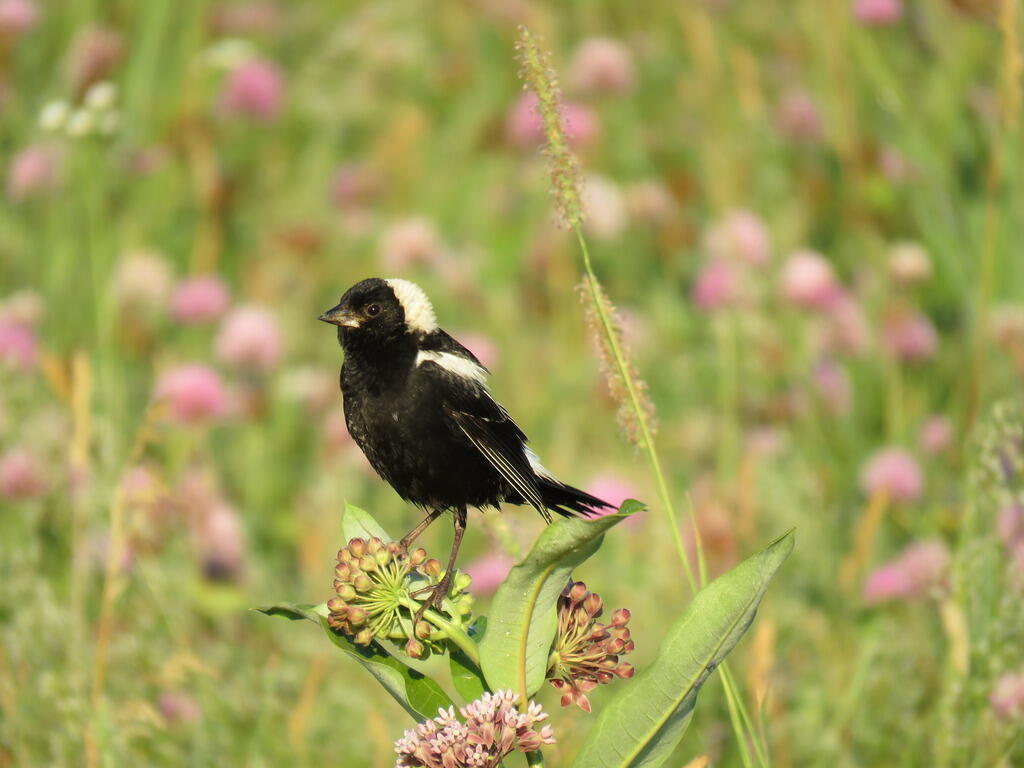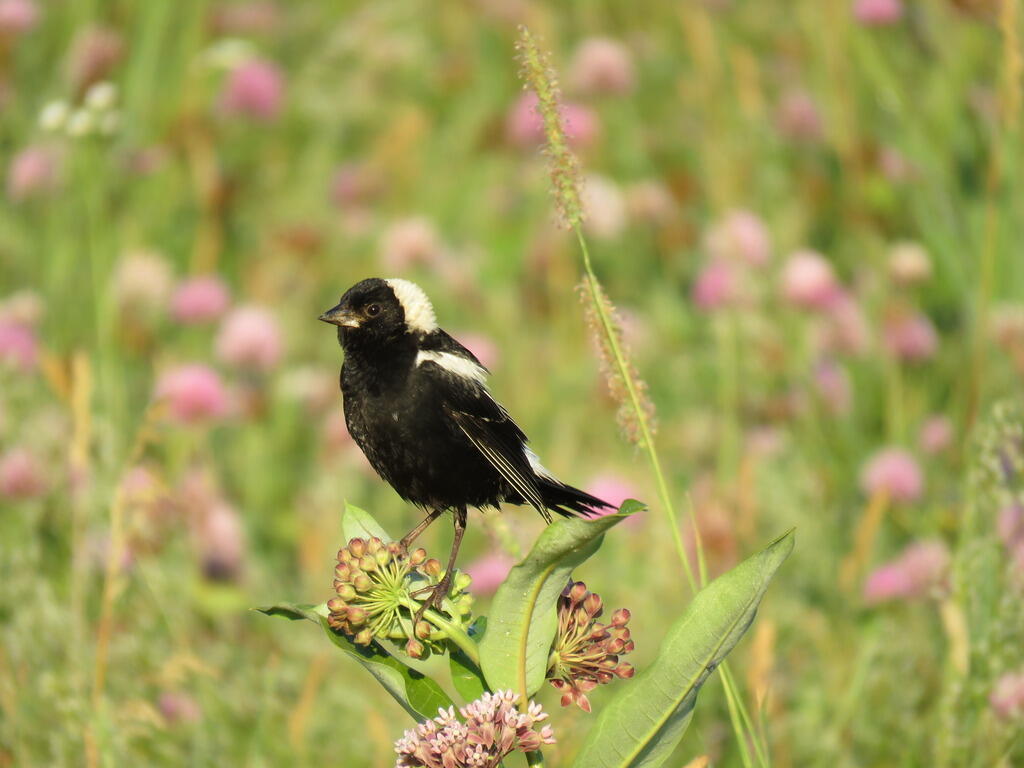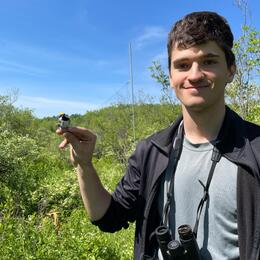Written by Environmental Conservation Intern Thomas Patti.
Elizabeth Frank is not a trust fund baby.
To put food on her table, she relies heavily on her 54-acre farm in Orwell, Vermont. And what she can’t produce on site, she often acquires through barter. But when it comes to the berries and fruits she grows on her property, Ms. Frank is happy to share with her neighbors.
“I say to them, ‘You know what, you guys get the top third of these cherry trees, but you need to leave some for me. You get some of the honeyberries and the Aronia and the currants and the gooseberries.’”
Ms. Frank, of course, is talking about birds. “Sometimes they get the lion's share,” she laughs. “And we have to have a chat. I'm like, ‘Wait a minute, you guys. I'm willing to share, but you need to leave some for me, too.’”
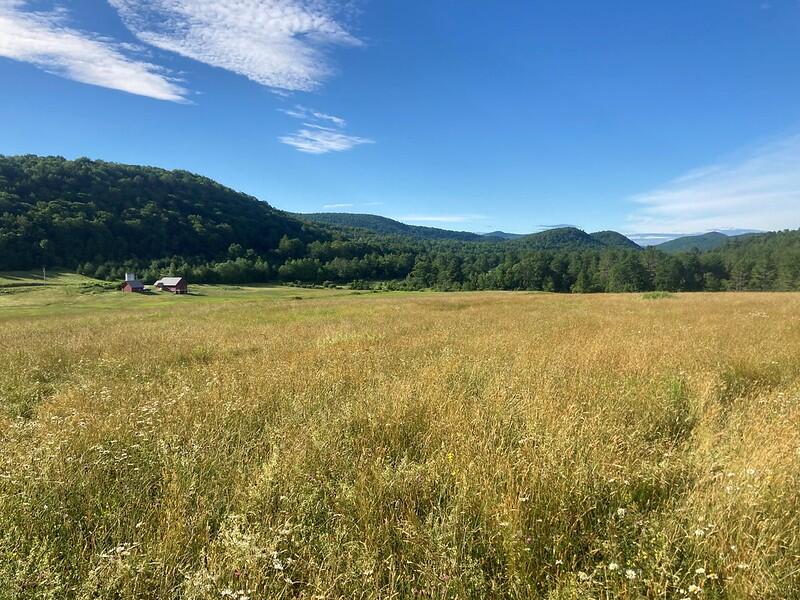
Ms. Frank’s property, Eagle’s Flight Farm, is a wildlife haven by design. The relatively small plot makes room for five different habitat types—clayplain forest, marsh, lake, gardens, and grasslands. Passionate about permaculture, Ms. Frank grows her fruits, vegetables, herbs, and flowers in guilds, or diverse communities that benefit the crops themselves, the land, and associated wildlife. “There’s no monocropping here,” she tells me, amused by the understatement.
Sustainable agriculture might not be the easiest path to financial stability, but Ms. Frank wouldn’t have it any other way. “I just feel so strongly that our planet needs to have as much restoration and varied ecosystems and support as possible,” she tells me. “This property is on the lake with a fabulous view, and I really, really don't want to sell out to somebody who just wants this for the view or wants to put up a McMansion or have a second or third home.” As the only landowner on her street not engaged in intensive farming practices, Ms. Frank feels an extra sense of obligation to keep her property a welcoming place for birds. “It feels important,” she adds.
Ms. Frank is one of 23 landowners, including 16 in Vermont, who enrolled this year in the Bobolink Project, a program that provides financial incentives for bird-friendly grassland management on private lands. As a conservation intern for Audubon Vermont, I was able to assist with grassland bird surveys throughout the summer to monitor the success of these efforts. And while the birds were spectacular and the views breathtaking, it was the people I met—people like Elizabeth Frank—who left me inspired by their voluntary, oftentimes sacrificial dedication to the birds they aim to serve. With this in mind, I set out to learn how the Bobolink Project works—or doesn’t work—for enrolled landowners. What I found was that, despite inherent complexities and challenges new and old, the Bobolink Project is remarkably effective at generating concern for grassland birds among diverse stakeholders—and translating that concern into urgent conservation action.
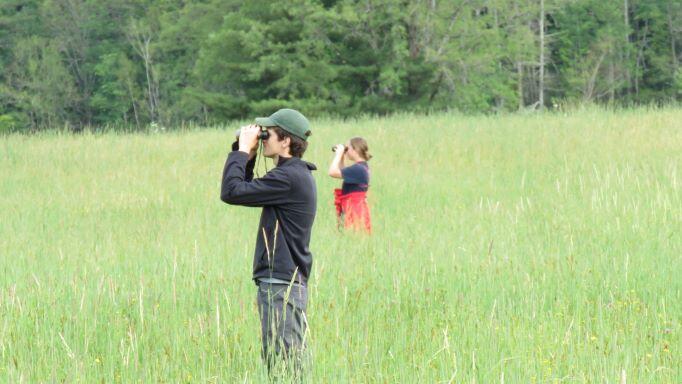
When we think of songbird habitat, we often think of trees. Personally, I picture a Wood Thrush, its head cocked back as it belts its chiming tune from a branch high above the forest floor. But not all species require the deep dark woods to find food, mates, and nest sites. In fact, some want little to do with it. Prior to the 17th century, the region was almost completely covered in dense forests. It wasn’t until European colonizers cleared much of this land—along with the Indigenous people who had long tended it—to create grasslands for their livestock that certain birds rose from local scarcity to regional prominence. These included the Bobolink, a dashing black bird that flies in an endearingly awkward flutter and sings like R2-D2; the Savannah Sparrow, a little brown bird (LBB) with a distinctive yellow brow; the Vesper Sparrow, another LBB with a thin white eye-ring; and the Eastern Meadowlark, a hefty songbird with a bright yellow chest and a sweet whistling song.
Since then, grassland bird populations have ebbed and flowed alongside the strength of the agricultural industry. Now, as uncertain economic conditions increasingly force farmers to intensify their agricultural practices or sell their lands for development, grassland birds are again in decline. Of the 16 grassland species in Vermont, four are listed as state endangered or threatened (Henslow’s Sparrow, Upland Sandpiper, Grasshopper Sparrow, and Sedge Wren), and seven more are designated as species of greatest conservation need. Data collected by the North American Breeding Bird Survey indicate that four of these species—the Bobolink, Eastern Meadowlark, Grasshopper Sparrow, and Vesper Sparrow—have declined by 2.7 to 8.6 percent in Vermont between 1966 and 2017… each year.
So, agriculture simultaneously allows grassland birds to exist in the region and threatens their long-term survival. According to Allan Strong, professor and interim dean of the University of Vermont’s Rubenstein School of Environmental and Natural Resources, this paradox necessitates a solution that works for birds and landowners alike. The good news: we know what works for birds. In 2002, Dr. Strong and then-graduate student Noah Perlut began researching the effects of different hayfield mowing schedules on the breeding success of grassland birds. Their findings were striking, and intuitive: avoid cutting while eggs and young chicks are hiding in the grass, and the birds do better. Much better. In fields cut early and often during the nesting season, Bobolinks fledged basically zero young. Following each hay harvest, virtually every nest was either destroyed on the spot or quickly ravaged by a predator. When all cutting was delayed until August 1, meanwhile, an impressive 2.8 young Bobolinks took flight per adult female. Savannah Sparrows responded similarly.
Rarely do ecological field experiments yield such cut-and-dried results. Unfortunately, conserving grassland birds in the real world is far less simple. Delaying hay harvests until August represents a sacrifice that most dairy farmers, for example, simply can’t afford. Late-cut grass is protein-poor, reducing milk production in cows. More generally, sky-high land taxes and other farm operating costs force many landowners to rely on hay sales to make ends meet. Simply put, by reducing or delaying their haying activity, farmers have a lot to lose. In economics, these potential sacrifices are known as opportunity costs. And even for the most conservation-minded farmers, the opportunity costs of making these management changes on their own are just too steep. Therefore, forcing farmers to adopt grassland management practices would simply put farms out of business, resulting in the conversion of even more grasslands to commercial and residential development. The fate of grassland birds is in farmers’ hands. But it can’t be farmers who bear the full burden of the costs.
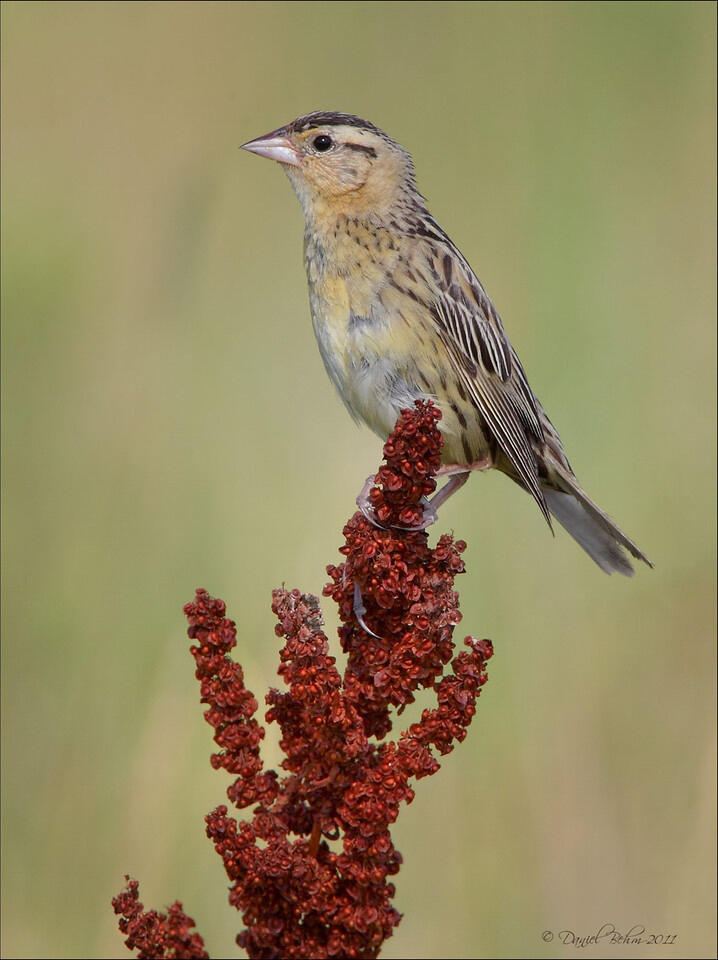
For Dr. Strong’s team, a voluntary incentive program was the clear answer. For three years, they partnered with the Vermont state office of the National Resources Conservation Service (NRCS) to offer financial compensation to landowners who agreed to take up bird-friendly mowing practices on their fields. Then, when government funding temporarily ran dry, they turned to the bird-loving public. “This time, we took a page from the books of ecological economics,” Dr. Strong wrote in a 2015 issue of Bird Observer. In private markets, goods and services are provided at efficient quantities only when their true values are taken into account. Since we receive environmental services like carbon storage, water filtration, and pollination directly from nature, we pay less for them than we benefit from them. We free-ride. But when given the chance to put their money where their mouths are, Dr. Strong wondered, would people step up for birds? “We asked the question, would the public be willing to pay landowners directly for providing Bobolink habitat, even though it is still relatively easy to drive down a country road and see Bobolinks giving their emphatic, bubbling, flight song over a hayfield?”
So far, the answer has been yes. In 2013, Dr. Strong teamed up with Stephen Swallow of the University of Connecticut and Lisa Chase of UVM Extension to expand the Bobolink Project to Vermont. The project began in Rhode Island in 2007. Initially supported by a grant from the United States Department of Agriculture, it has been administered since 2016 by Mass Audubon, Audubon Vermont, and Audubon Connecticut. And since that transition, the Bobolink Project has raised more than $330,000 in public donations, resulting in the protection of nearly 900 acres of grassland habitat across the Northeast each year. In Vermont alone, an annual average of 730 protected acres over the last seven years has supported more than 1,900 Bobolink pairs and an estimated 5,300 fledglings. These numbers might be hard to interpret on their own but remember Drs. Strong and Perlut’s research (Dr. Perlut is now a professor at the University of New England in Biddeford, Maine): under intensive haying regimes, which represent the norm for dairy farmers, fledging rate drops to zero. Viewed in this light, the upshot becomes clear: the Bobolink Project saves a lot of Bobolinks.
Here’s how the Bobolink Project works. Each year, the partnering Audubon organizations solicit donations from the general public. To efficiently allocate these funds to interested landowners, a reverse auction is held, whereby the landowners who agree to adopt bird-friendly haying practices for the least amount of money per acre are enrolled first. Landowners are accepted into the program until the funding pool runs out. Each accepted landowner receives the same per-acre price bid by the last landowner to make the cut. Enrolled landowners have two haying options: delay all cutting until August 1 or take a first cut by June 1 and wait until August 15 to take the next one. Though an early cut causes present Bobolinks to abandon the field, Dr. Strong’s team found that the delay before the second cut gave new Bobolinks enough time to settle and raise young, resulting in the same reproductive success between both management practices.
At its core, the Bobolink Project gives farmers the financial flexibility to do right by grassland birds. Take Phil Wagner, a beef and hay farmer who enrolls 20 of his 173 acres in Shoreham, Vermont in the Bobolink Project. When Drs. Strong and Swallow approached him in 2013, it was a number that caught his attention—$500 per acre. That’s how much the co-founders said he could potentially earn by enrolling. In reality, the price never came close to that. In 2013, landowners earned $160 per acre. For the past four years, they’ve earned $50. As the project’s popularity increased, so did the competition among bidding landowners, driving down the price. Still, the funding from the Bobolink Project allows Mr. Wagner to (just barely) break even. And his newfound appreciation for the needs of the birds on his farm has him intent on continuing to do his part—as long as he can. “I wouldn’t want to go any lower,” he said about the project’s current reward for enrolled farms. “I guess I’m just a sucker. I like Allan and all the other folks involved. I feel like I’m helping in some way. But at some point it’s like, ‘Well, it’s hurting financially, so while I like you guys, sorry, but I can use the income as far as haying.’”
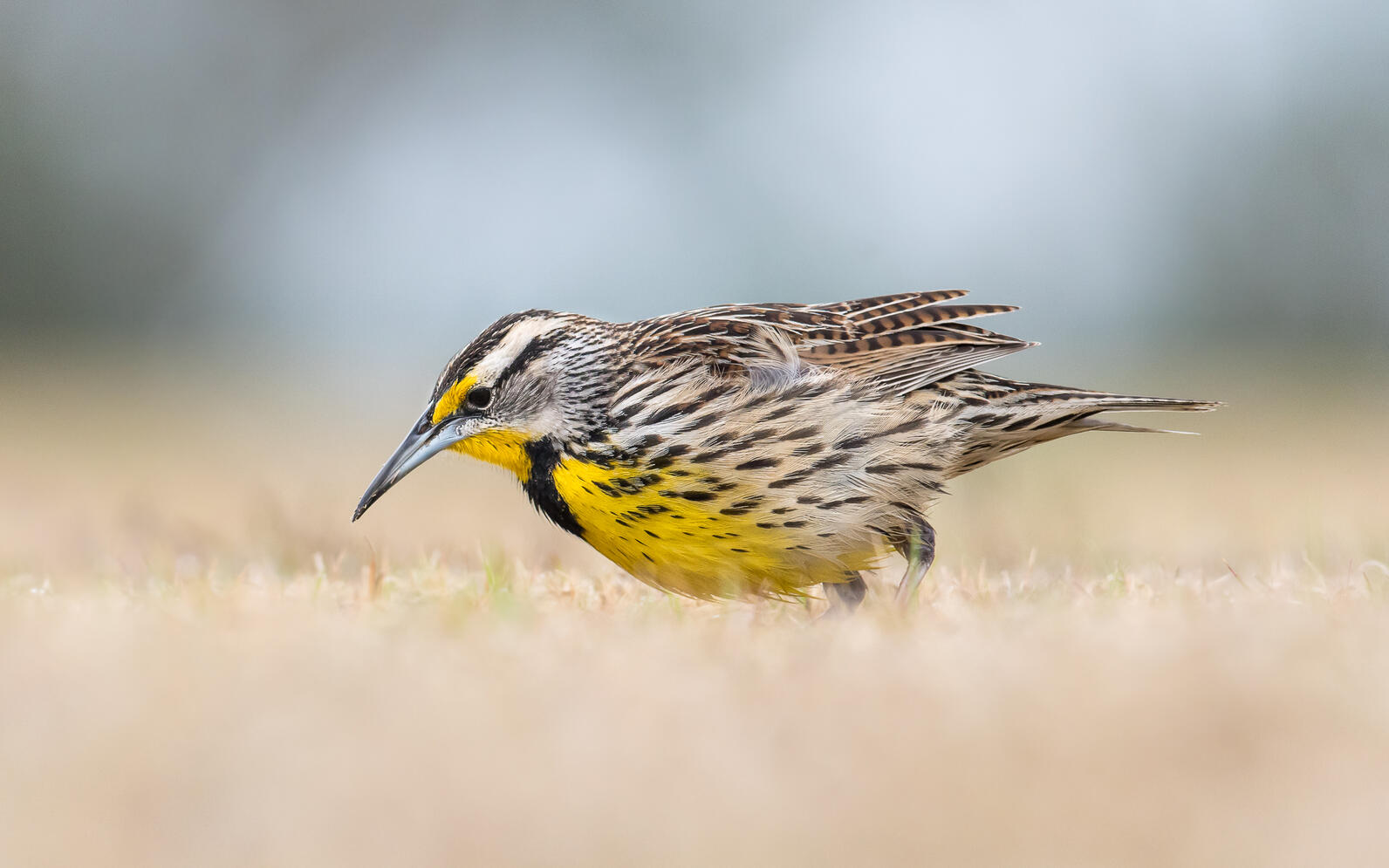
Some enrolled landowners can afford a greater financial sacrifice to engage in conservation practices on their farms. Years ago, Lyn Des Marais, the owner of a 1,250-acre organic farm in Brandon, Vermont, was offered up to three times more money for her hayfields than she had been receiving from an organic beef farmer. But unlike her current business partner, this farmer would be applying chemical herbicides and fertilizers to the land. Enrolling in the Bobolink Project, she learned, would help bridge this monetary gap while upholding her commitment to organic farming. Still, Ms. Des Marais only makes half of that larger offer. “That was worth it,” she told me. “That we could afford.”
And when it comes to compensation for her grassland management, Ms. Des Marais is flexible. “I just want to be part of the project at this point, no matter what they're offering, pretty much.” Marketing her involvement with the Bobolink Project on social media, Ms. Des Marais added, has given her business an extra boost aside from the funding. Both Ms. Des Marais and Ms. Frank told me they’ve learned to bid low in the Bobolink Project auction to ensure their lands are enrolled year after year.
This is where things get complicated. In one sense, the auction system is efficient because it forces landowners to bid as low as they can afford to. Theoretically, competition should drive their bids down to their true opportunity cost of adopting a modified haying schedule. And the less that each landowner receives, the farther the donation pool can be spread—and the more grasslands can be protected. But if we care about who receives funding from the Bobolink Project, there are more questions to consider. For example: what would landowners be doing with their hayfields if they weren’t enrolled in the project? While financial pressures would certainly force many landowners to cut their fields during the nesting season, others might delay their harvests anyway—because they simply don’t need that higher-quality first cut, or because they can afford to sacrifice it for the birds without the extra incentive. The Bobolink Project would maximize its efficiency by distributing funds only to farmers who would otherwise mow their fields intensively, because it is on those fields that, without intervention, total breeding failure is virtually guaranteed.
We might also consider economic equity: as competition for funding increases each year, who is being squeezed out of the market? If we care only about total acreage, we might not worry about this point. But if we want grasslands to be protected by landowners who value bird habitat the most (and are thus more likely to engage in other sustainable practices), or whose practices are responsible for the existence of the habitat in the first place (i.e., dairy farmers), an auction system might fall short. While neoclassical economics tells us that dollars are a measuring stick for how much a person values a good or service, we know that the same amount of money can mean very different things to different people. This is called an income effect. So, the auction does little to keep less wealthy landowners at the table, even if they are the most committed to the Bobolink Project’s mission. We should consider racial equity, too: before dairy agriculture increased grassland coverage in the region exponentially, it was Indigenous farming that, through prescribed burns, helped create any grasslands at all. How do we account for Indigenous contributions to grassland bird conservation? Does acknowledgment of this history suffice? Or are financial reparations in order?
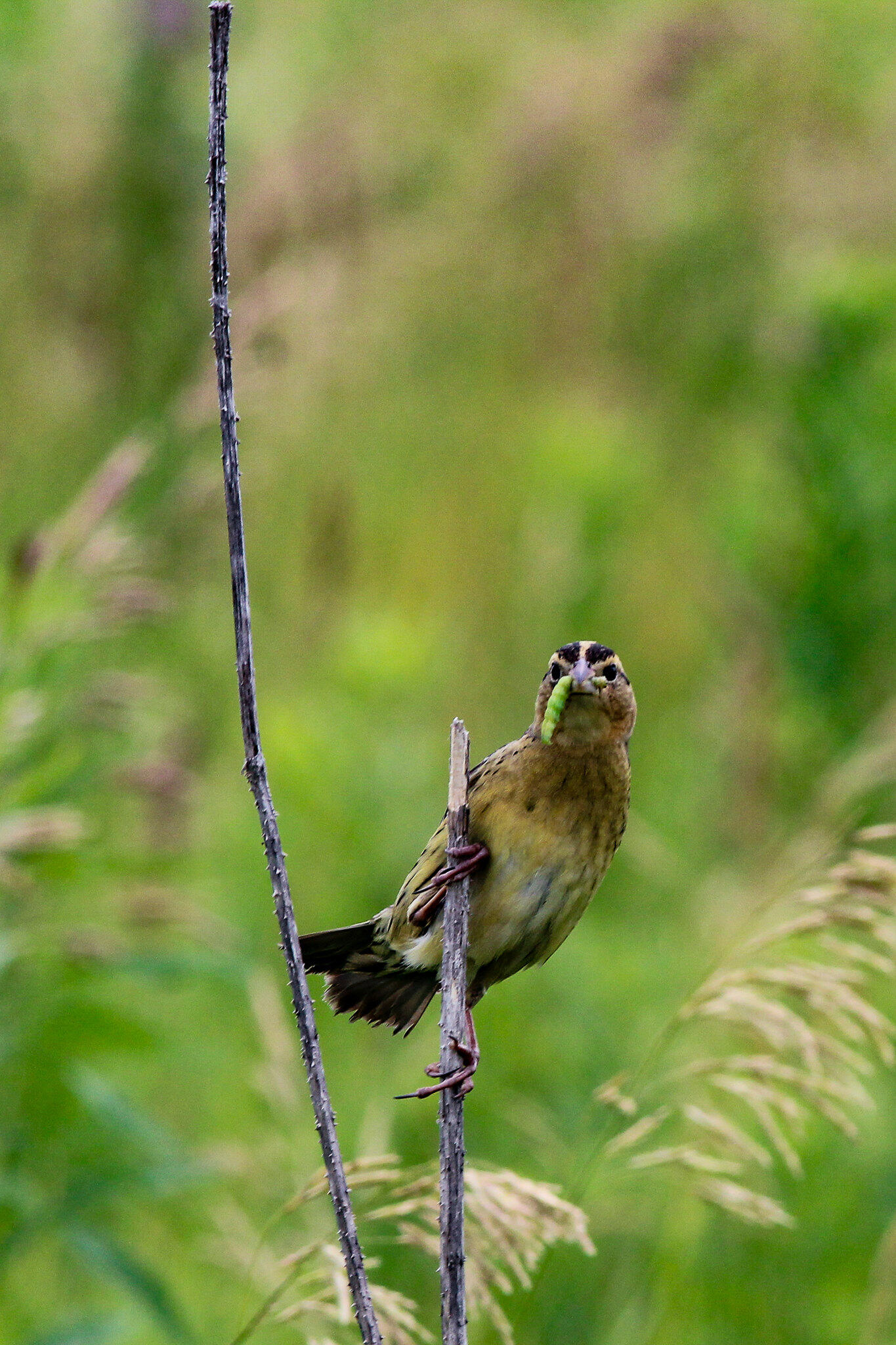
I could go on. The point is, for such a seemingly simple solution to protecting grassland habitat, the Bobolink Project offers no shortage of thorny challenges. But the project’s leaders are actively considering fixes. When I asked Dr. Strong about the risk of full-time farmers being priced out of the market, he offered two possibilities: reserving a portion of the funds specifically for this group and stabilizing the reward price by discouraging under-bidding. Here’s how these solutions could work:
1. Create separate funding pools for farmers and non-farmers. The NRCS incentive program continues to this day, and actually offers farmers substantially more money for delayed mowing than the Bobolink Project does—about $160 per acre. But based on my conversations with landowners enrolled in the Bobolink Project, few are aware of this potential revenue source, and the ones that are balk at the specific requirements and extensive paperwork of applying for a government program. They like the Bobolink Project’s simplicity. So, setting aside some of the donations for these farmers might be the best way to keep them in the game.
2. Award landowners exactly what they bid, rather than the highest accepted bid. This might deter landowners from low-balling their bids simply to guarantee acceptance, thereby deflating the final reward price. I made some back-of-the-envelope calculations to see how this adjustment would affect the auction outcome. In 2019, just 15 of 30 landowners who entered bids were accepted into the Bobolink Project. If landowners received only their bid price, all but one of those 30 landowners would have made the cut, resulting in an extra 319 acres of protected grassland. In 2017, meanwhile, no additional acres would have been enrolled under this modified structure. Of course, the whole point of this solution would be to change landowners’ bidding strategy, so these results should be taken with a grain of salt. At the very least, this rule change would allow the Bobolink Project staff to get a better sense of landowners’ true opportunity costs of adopting bird-friendly grassland management practices.
“How Much is a Bobolink Worth?” asks the title of Dr. Strong’s article in Bird Observer. At first glance, this is the question that the Bobolink Project sets out to answer. But after weeks spent chewing on its economic, ecological, and ethical implications, I realized this question is missing two critical words: …to humans. Arguably, this is a fundamentally different question. An ecological economist, for example, might contend that the value of a Bobolink is intrinsic—i.e., independent of our personal benefit—and therefore resistant to the cost-benefit analyses of traditional capitalist thinking.
The distinction between these questions might seem subtle, but it could mean a world of difference for conservation outcomes. Thankfully, people care enough about grassland birds for the Bobolink Project to work. But what if they didn’t? What if the Field Sparrow, another imperiled grassland bird, didn’t have such a charismatic neighbor in the Bobolink to generate conservation concern? Should what lives and what dies in our rapidly changing world depend on the soft spots, ignorance, and indifferences of humankind?
But to conclude, let’s set aside my philosophical musings. The Bobolink Project is really good at what it does. And landowners like Ms. Des Marais are grateful. “This work completes our farm,” she told me. “We really want to be environmentalists and farmers. So it really helps me complete that picture.”
This is the sentiment that I encountered again and again during my research into the Bobolink Project. Many farmers don’t just want the money. They actively want to be a part of the solution. And even with the funds they receive from the Bobolink Project, they make sacrifices to do just that. In this market, there aren’t just buyers and sellers. There are buyers, sellers, and birds. And for the birds, both buyers and sellers step up to the plate.
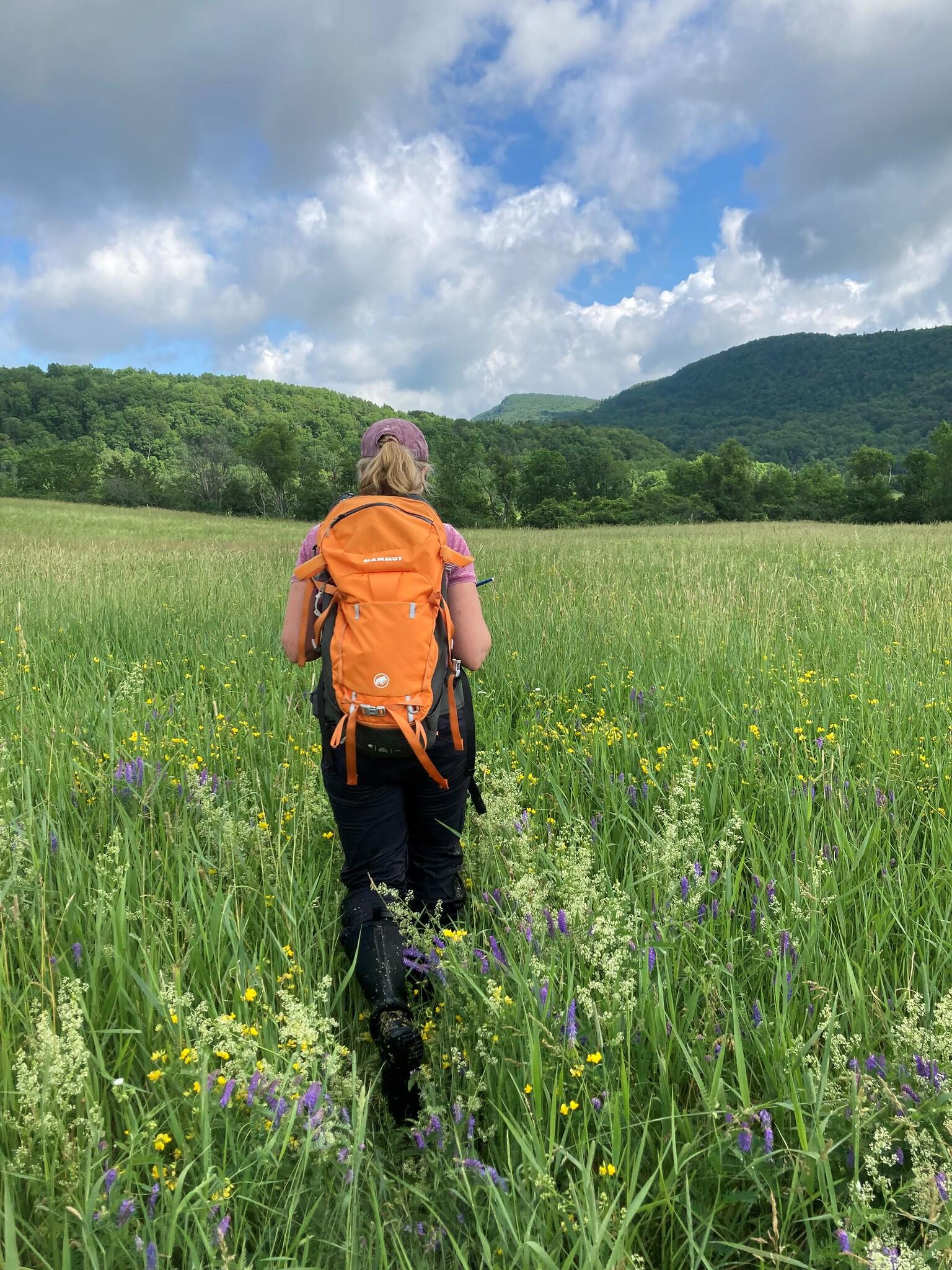
If that doesn’t inspire you to prance around a grassy field (outside of nesting season, of course) and belt your best Bobolink impression to the high heavens, then I definitely don’t know what will.
Want to be part of the solution for grassland birds?
Donate to the Bobolink Project here. Or, if you’re a landowner, click here to enroll some or all of your hayfields in the Bobolink Project.
True to the complexity of grassland bird conservation, one more dilemma has joined Bobolink Project farmers in apprehension: the poison parsnip problem. To learn more, visit Coordinating Care, Part Two here.

